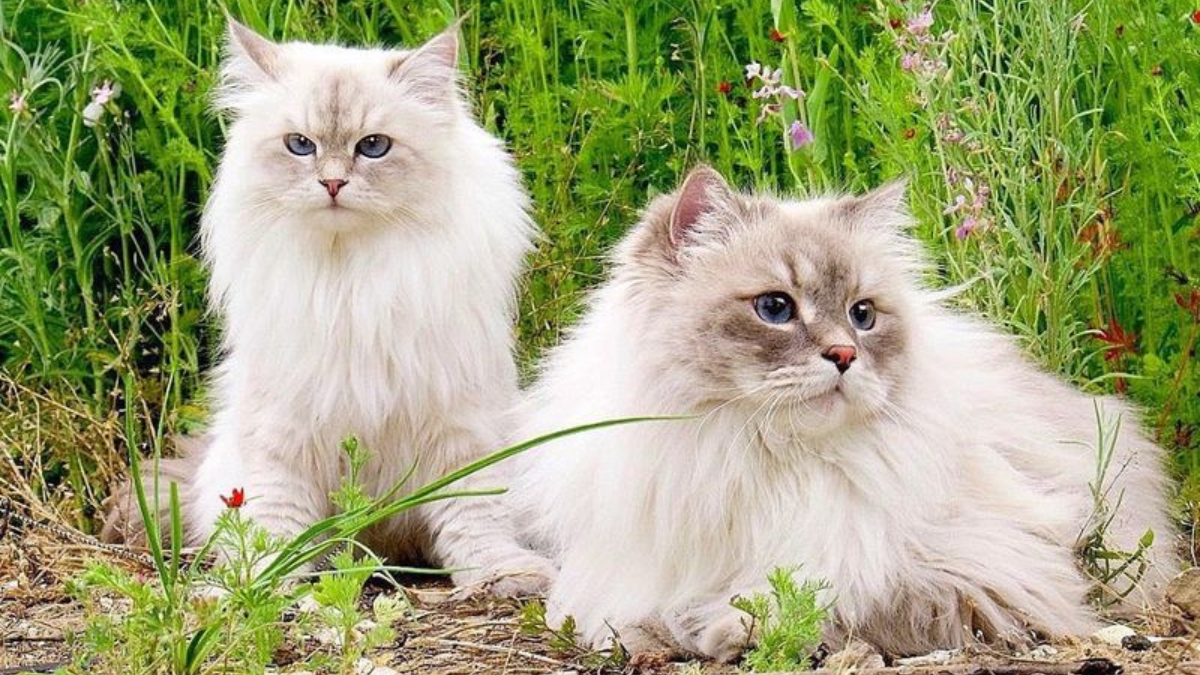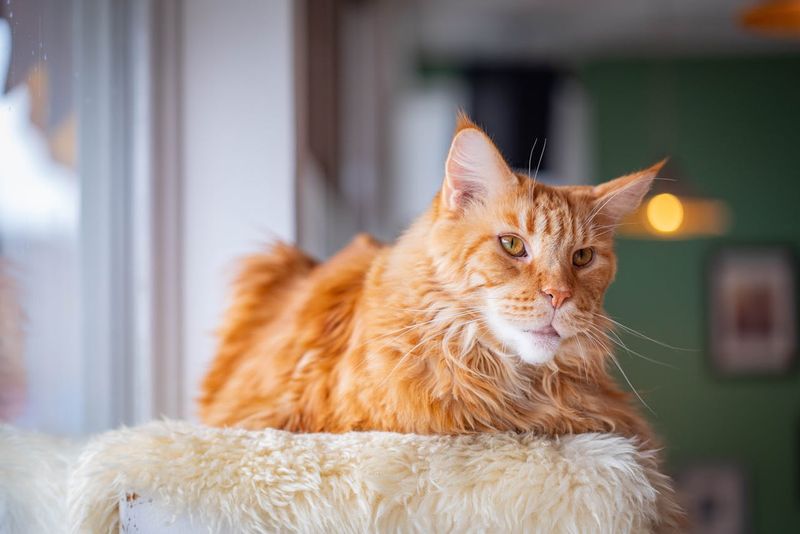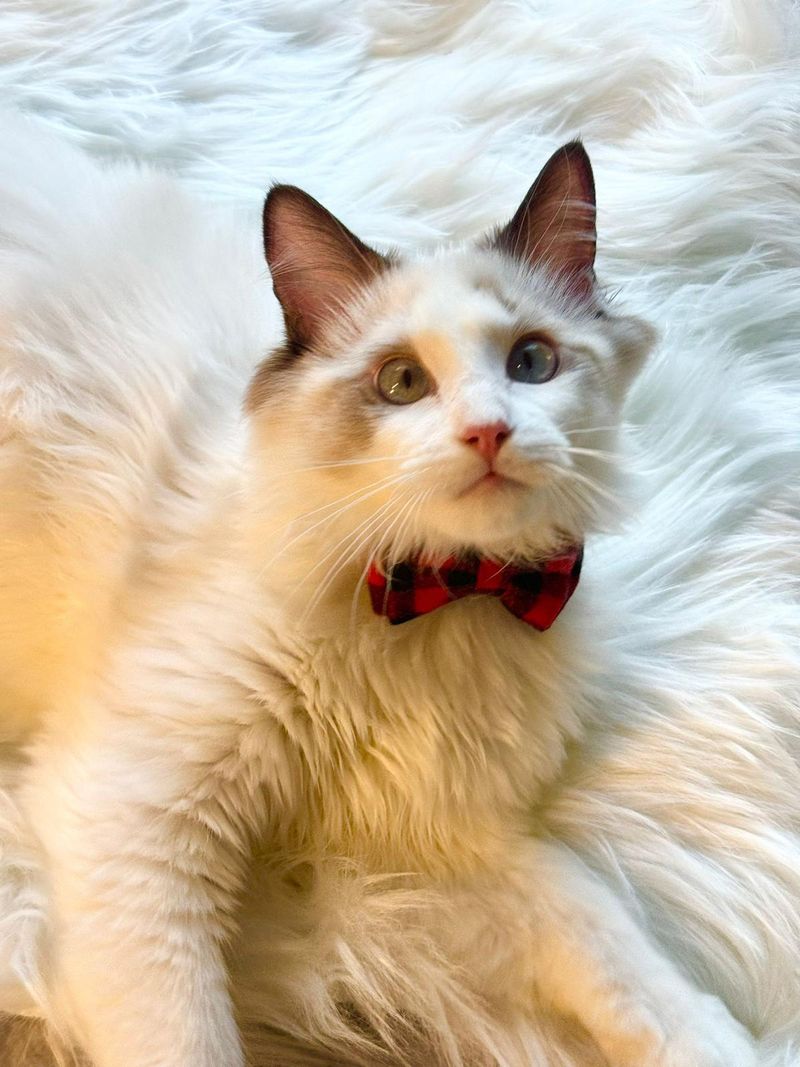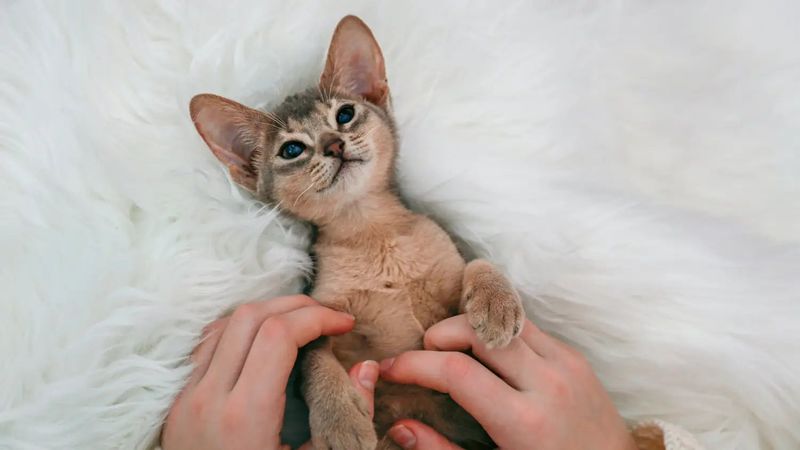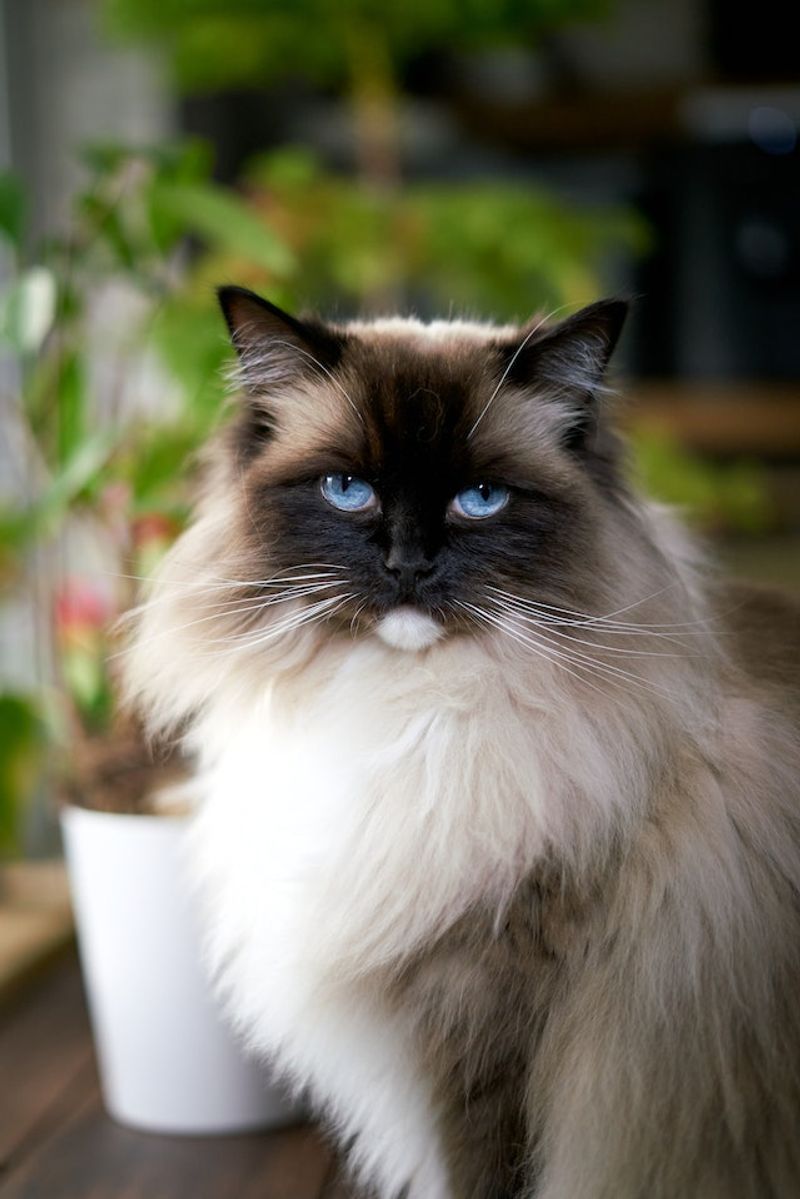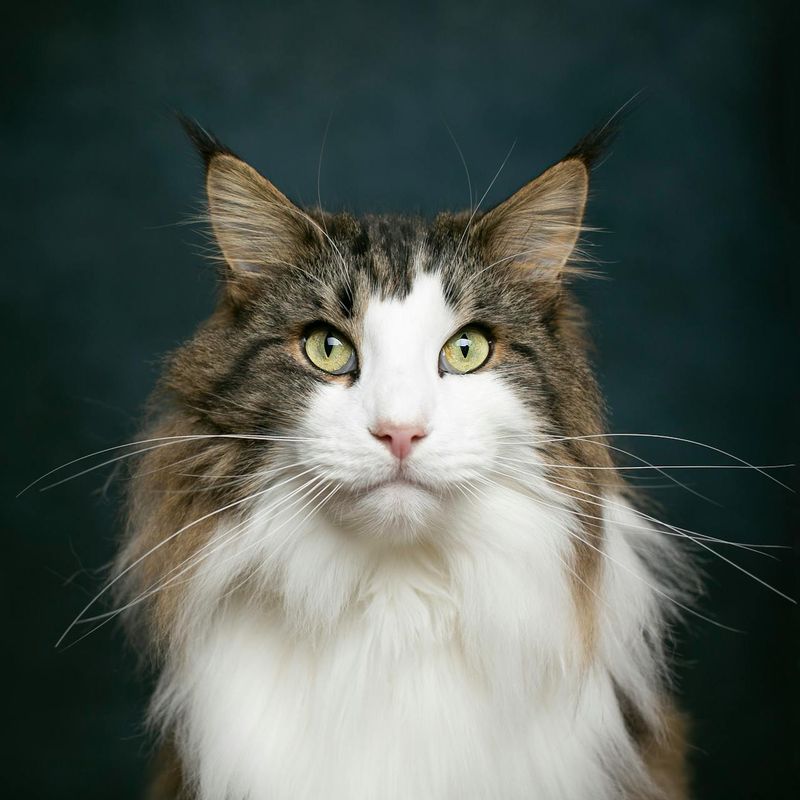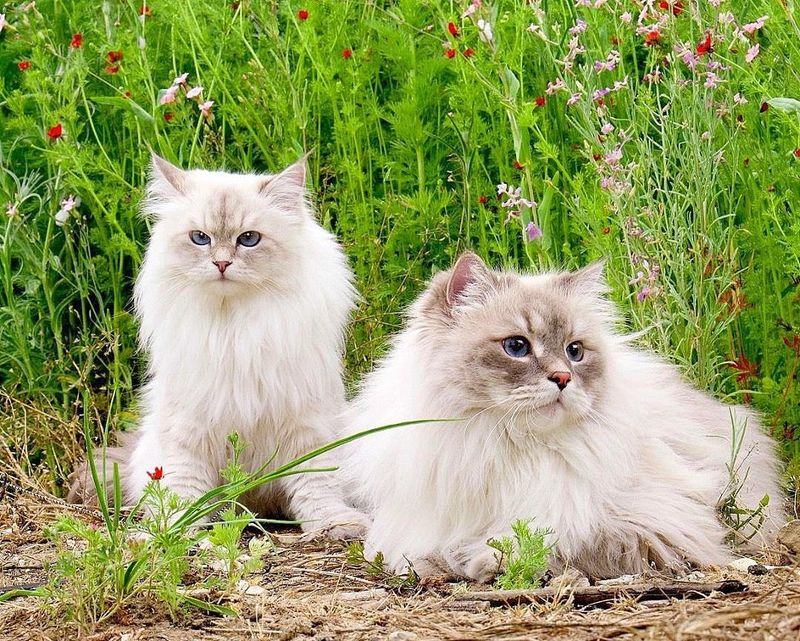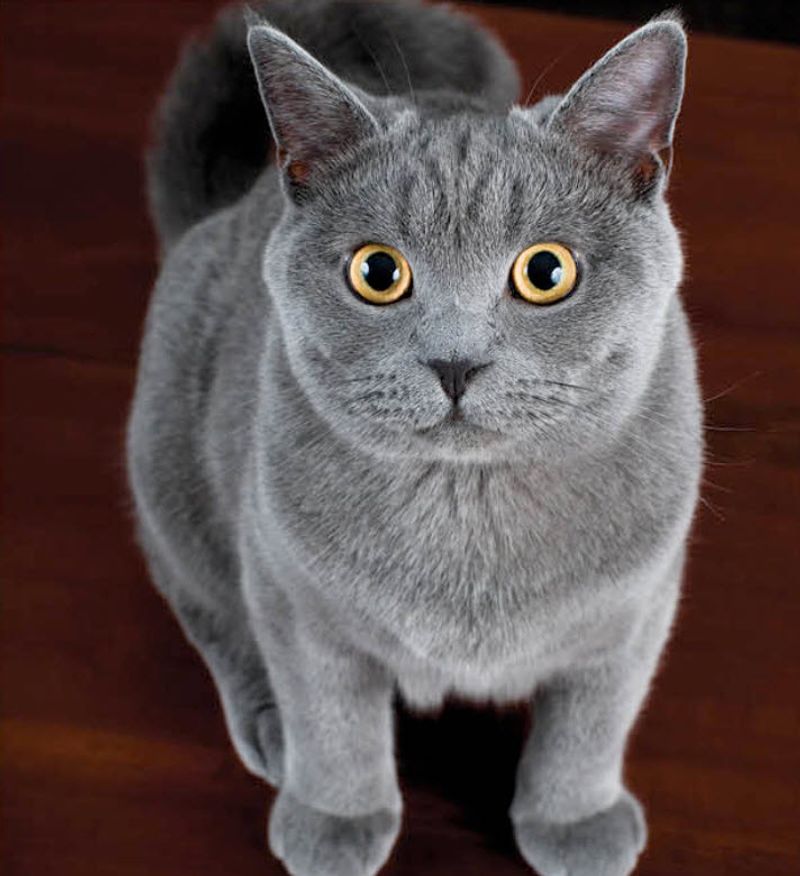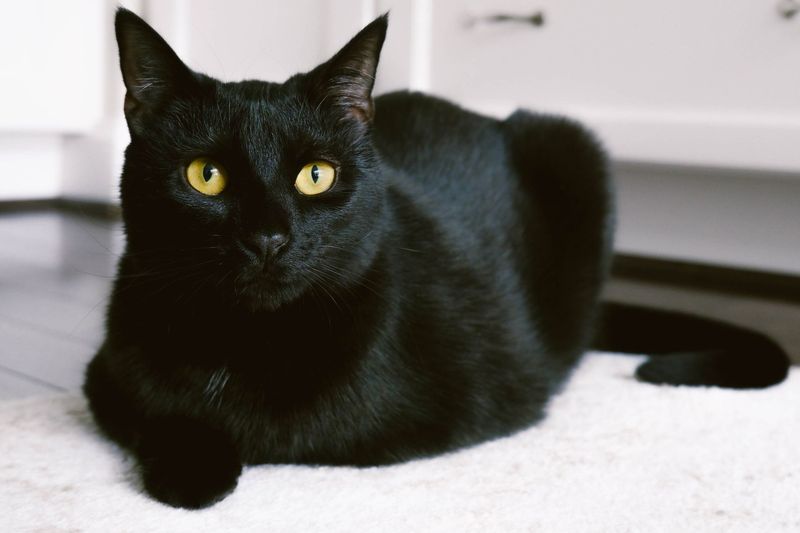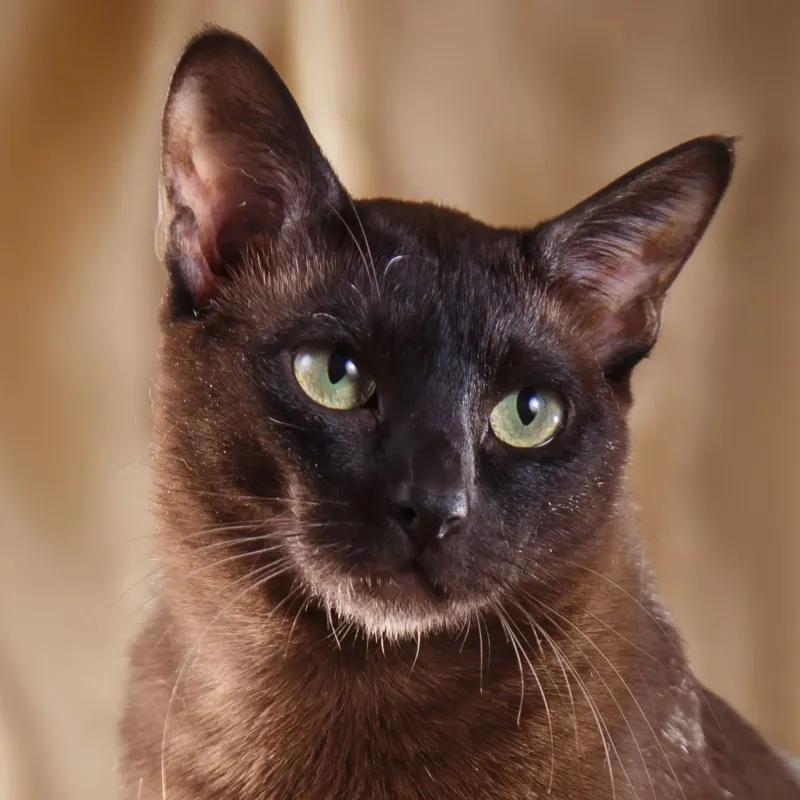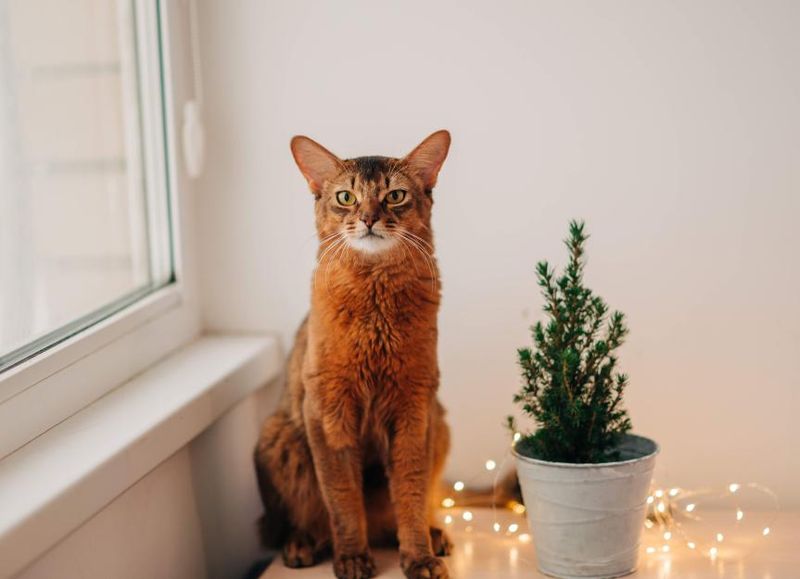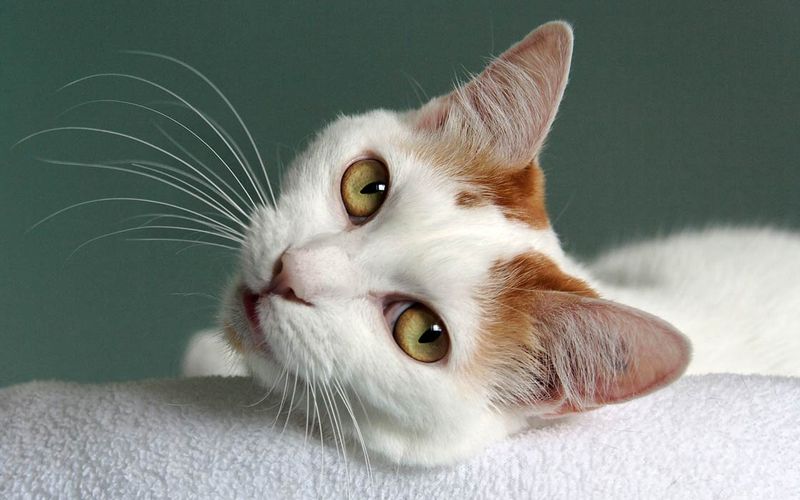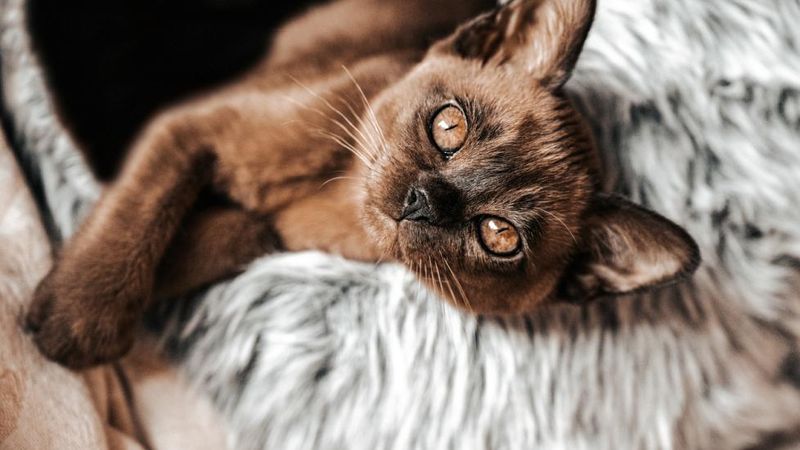📖 Table of Content:
Finding the right cat for a home with other animals can be tricky. Some cats naturally get along with dogs, birds, or other cats, while others prefer to be the only pet. The perfect feline friend should have a calm personality, low prey drive, and sociable nature to create harmony in your multi-pet household. Here are 12 cat breeds known for their exceptional ability to live peacefully alongside other animals.
1. Maine Coon
Gentle giants of the cat world, Maine Coons are famous for their dog-like personalities and friendly attitudes toward other animals. Their easygoing temperament makes introductions to new pets relatively stress-free. Maine Coons rarely show aggression and often form strong bonds with family dogs.
They’re patient with smaller pets and won’t typically chase birds or hamsters with the same intensity as other breeds. Their intelligence helps them understand boundaries and respect other animals’ space. Maine Coons are also great mediators in multi-pet households, often stepping in to calm tensions between other animals.
2. Ragdoll
Ragdolls earned their name from their tendency to go limp when picked up, and this relaxed attitude extends to their relationships with other pets. They rarely feel threatened or territorial, making them excellent companions in mixed-pet homes. Known for their docile nature, Ragdolls typically avoid conflict and prefer peaceful coexistence.
Many Ragdoll owners report these cats forming surprising friendships with dogs, rabbits, and even birds. Their calm demeanor means they won’t startle easily around energetic pets. Ragdolls are particularly good with well-behaved dogs and can often be found cuddling with canine friends during nap time.
3. Abyssinian
Active and playful, Abyssinians bring energy to multi-pet households without the territorial issues some cats display. They’re naturally curious about other animals and approach new friendships with enthusiasm rather than fear or aggression. Abyssinians thrive on interaction and often initiate play with dogs or other cats.
Their athletic build means they can keep up with energetic dogs during playtime, creating natural bonding opportunities. Despite their high energy, these cats are surprisingly respectful of boundaries. Abyssinians adapt quickly to household routines and can learn to coexist with birds, rabbits, and other small pets when properly introduced.
4. Birman
Birmans carry an almost spiritual calm that seems to influence other animals around them. Their patient temperament makes them ideal companions for households with multiple pets, including excitable dogs or skittish small animals.
These cats rarely show aggression and prefer using gentle communication. Birmans are known for their ability to adapt to existing pet dynamics without disrupting the household balance. Their medium energy level means they can engage in play with other pets without becoming overstimulated. Birmans particularly excel in homes with elderly pets or animals that need a non-threatening feline companion.
5. Norwegian Forest Cat
Rugged yet remarkably gentle, Norwegian Forest Cats bring a balanced energy to multi-pet households. Their Viking heritage has created a breed that’s confident without being aggressive, allowing them to establish peaceful relationships with other animals. These cats are particularly good with dogs, often engaging in playful chases or grooming sessions with their canine housemates.
Their thick coat and sturdy build mean they’re not easily intimidated by larger pets. Norwegian Forest Cats maintain their hunting instincts but can be trained to respect smaller pets. They’re patient with children and other animals, making them excellent additions to busy households with various pets.
6. Siberian
Siberians developed their social skills in the harsh Russian climate, where cooperation with other animals was often necessary for survival. This history has created a breed exceptionally skilled at forming bonds with different species.
Family-oriented and affectionate, Siberians view all household members – human and animal – as part of their clan. They’re remarkably adaptable and can adjust their play style to match the energy level of other pets. Despite their powerful build, Siberians are gentle when interacting with smaller animals. Their problem-solving intelligence helps them navigate complex social dynamics in homes with multiple pets.
7. American Shorthair
American Shorthairs bring generations of balanced temperament to multi-pet households. Originally bred as working cats, they combine independence with sociability in a way that respects other animals’ boundaries.
These cats typically establish friendly but respectful relationships with dogs and other pets. Their moderate energy level means they can engage in play without overwhelming more reserved animals. American Shorthairs are particularly good at reading social cues from other species. Their adaptable nature makes transitions smooth when introducing new pets to the household, as they rarely feel threatened by newcomers.
8. Bombay
With the sleek look of a miniature panther and the affectionate nature of a teddy bear, Bombays are surprisingly social—even with other pets. Their strong attachment to people often extends to forming warm bonds with fellow animals.. These sleek black cats are known for their dog-like loyalty and often follow their pet friends around the house.
Bombays typically form strong attachments to household dogs and can frequently be found curled up with canine companions. Their playful nature makes them good matches for active households with energetic pets. Bombays maintain their kitten-like enthusiasm well into adulthood, creating lasting play relationships with other animals.
9. Tonkinese
Social butterflies of the cat world, Tonkinese cats actively seek friendships with other household pets. Their Siamese and Burmese heritage creates a personality that’s outgoing without being overbearing. Tonkinese cats rarely spend time alone when other animals are available for companionship.
They’re known for initiating play with dogs and other cats, often teaching even reluctant animals to enjoy interactive games. Their moderate size and athletic ability help them integrate well with both large dogs and small pets. Tonkinese adapt quickly to new animal additions and often take on the role of welcoming committee for pets joining the family.
10. Somali
Somalis bring fox-like playfulness and an uncanny ability to form cross-species friendships to multi-pet households. Their intelligence allows them to understand and respect the boundaries of other animals. These active cats make excellent playmates for energetic dogs, often engaging in games of chase that satisfy both animals’ exercise needs.
They balance their playful nature with surprising gentleness when interacting with smaller pets. Unlike some high-energy breeds, Somalis can turn off their hunting instincts around pet birds or rodents when properly introduced. Their adaptable personality makes them versatile companions in homes with varied pet combinations.
11. Japanese Bobtail
Rooted in centuries of cultural symbolism, the Japanese Bobtail brings not only its unique tail but also a courteous, easygoing attitude toward other animals—thriving in the company of both humans and pets alike. These cats combine playfulness with remarkable sensitivity to other animals’ moods.
Japanese Bobtails are particularly skilled at gauging when another pet wants to play versus when they need space. Their athletic ability and intelligence create opportunities for meaningful interaction with dogs and other active pets. Japanese Bobtails are also known for their “talking” – communicating with soft chirps that seem less threatening to other animals than traditional meows.
12. Burmese
Displaying a loyalty more commonly seen in dogs, Burmese cats often build strong relationships with other pets. They see their animal companions as part of the family and treat them with the same warmth they show their humans. These medium-sized cats combine playfulness with a gentle touch that works well with both robust dogs and delicate small pets.
Burmese are known for their ability to win over even the most cat-skeptical dogs through persistence and friendly overtures. Their need for companionship means they rarely harass other pets out of boredom or loneliness. Burmese cats typically learn household rules quickly, including which animal beds or toys are off-limits, creating harmonious multi-pet households.
